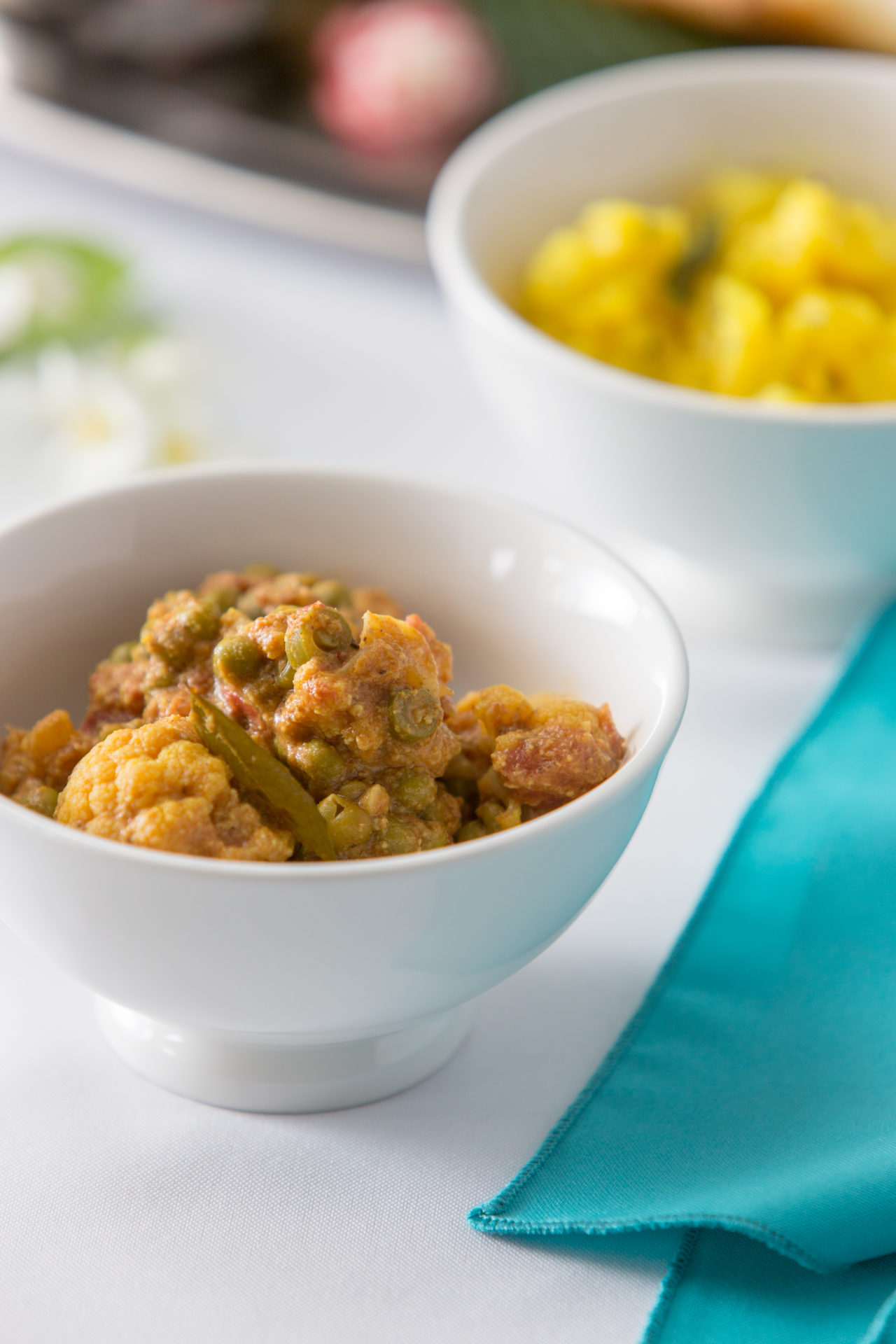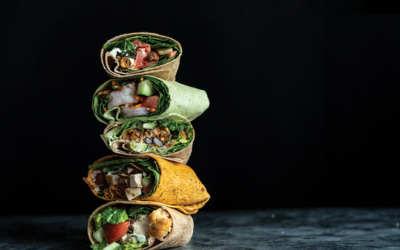You are what you eat, and as we learn more about how food affects our bodies, there’s a lot of wisdom packed into these five simple words. But for people with a cancer diagnosis, this advice isn’t so simple. Cancer treatment has side effects that can lead to significant weight loss (even malnutrition) or weight gain; certain foods, herbs or supplements can negatively affect cancer treatments. You’re also more than what you eat, so it’s essential that patients have both traditional and holistic experts on their team as they begin their battle.
One expert all cancer patients should have is a dietitian. Mary T. Englick of Kaiser Permanente talks to her patients about the power of food in preventing cancer and in reducing treatment side effects. She evaluates patients’ nutritional needs during chemotherapy or radiation and manages their side effects through dietary changes. Nutritional protocols for cancer patients are focused on evidence-based recommendations:
- Fruits and vegetables from each color family for a variety of immune system-supporting nutrients
- Water to aid in digestion and reduce some of the side effects like constipation and fatigue
- Dairy rich in calcium and vitamin D, such as yogurt; a great source of protein, nutrients and probiotics
- Fish rich in omega-3 fatty acids, which helps reduce inflammation, lowers the risk of some types of cancer, and is a rich source of vitamin D, which is thought to help protect against some cancers
- Whole grains such as steel-cut oats, quinoa, and farro which provide fiber, iron, magnesium, and folate
- Small, frequent meals to make it easier to get all the nutrition you need when dealing with appetite or weight changes
- Avoid processed meats such as ham, bacon, sausage and most deli meats
- Don’t take herbal, mineral or vitamin supplements without talking to your oncologist because they can change how your chemotherapy works
Besides keeping the mind and body in top shape, another piece of the puzzle is spiritual health. Alternative medicine can focus on essential facets of health that traditional medicine cannot. One such alternative approach that has been around for thousands of years is Ayurveda, an ancient Indian system of medicine that teaches that the body must be in balance for optimum health, and if it isn’t, illness or diseases such as cancer can occur.
Bina Mehta, a certified Ayurvedic lifestyle consultant, grew up in Mumbai, India, where Ayurveda was a way of life. For more than 40 years, she has shared her Ayurvedic expertise through her healing practice, cooking classes, Indian spice blends, and soon-to-be-published Indian cookbook, Turmeric & Spice, which includes Ayurvedic dietary principles.

“You can eat the healthiest food, but if your body is out of balance, it can’t digest and metabolize it effectively.”
—Bina Mehta, Certified Ayurvedic lifestyle consultant
“You can eat the healthiest food,” says Mehta, “but if your body is out of balance, it can’t digest and metabolize it effectively.” An Ayurvedic diet can be an effective way to get the body back into balance. Mehta’s cookbook includes a detox menu, and her recipes feature fresh foods and spices. “Spices have powerful healing effects including boosting the immune system,” she says. She calls her spice blends an “Indian pharmacy at your fingertips.”
At least two spices popular in Indian cooking belong in your kitchen: turmeric and ginger. Turmeric contains curcumin, a compound that research scientists have been studying for its possible anti-inflammatory effects. Englick notes that lab studies and those evaluating populations suggest that the occurrence of certain cancers is less in people who consume curcumin than in those who don’t. “Combining curcumin with black pepper seems to help its activity, and eating it with fatty foods such as olive oil or nuts also increases absorption of the chemical,” she says.
Ginger is commonly used for upset stomachs and nausea. Englick says researchers believe the chemical works primarily in the stomach and intestines, but ginger may also work in the brain and nervous system to control nausea. However, there’s conflicting evidence that it works during cancer therapy. Patients should consult their doctors before taking anything that may interfere with their medications during cancer treatment. Studies are ongoing for how these spices fight cancer, but initial experiments show promise for cancer prevention as well as treatment.
The best nutritional plan for cancer patients is an integrated one that weaves together traditional and alternative medicine to address the needs of the mind, body and spirit. It is key for patients to bring down their stress levels and increase immunity using whatever approaches work best for them, whether it’s through prayer or reflection, their favorite exercise, or eating their favorite food with their favorite spice.
Recipes for Health
Ready to start adding more turmeric to your diet? Try these two recipes from Bina Mehta’s upcoming cookbook.

Golden Milk Elixir
Turmeric (haldi) has endless health benefits. This miracle spice contains curcumin, a flavonoid that supports a healthy inflammatory response, thereby promoting general well-being. Turmeric also boosts the immune system, assists digestion, purifies the blood, and promotes the health of the lungs, circulation system and nervous system. Turmeric promotes sleep by calming the nervous system, and nutmeg helps with sound sleep, making this recipe the perfect bedtime drink. If you have an upset stomach, this drink will be soothing. Ghee has a laxative effect.
1 cup whole milk (or your choice of milk)
1 teaspoon turmeric powder
¼ teaspoon black pepper
Pinch of cinnamon powder
teaspoon cardamom powder
2 teaspoons ghee
1/8 teaspoon nutmeg
½ teaspoon of your favorite sweetener (optional)
Place the milk in a saucepan and cook over medium heat. Add the turmeric, black pepper, cinnamon, cardamom, ghee and nutmeg, and stir. Allow the mixture to simmer for a few minutes, stirring occasionally.
Turn off the heat, and cover. Let it sit for several minutes to allow for greater infusion.
Serve warm and enjoy before bed.
Gobi Mattur (Cauliflower and Peas)
This is a perfect side dish for a vegetarian served with dahl and rice. Simple, quick and easy to make; serve with kebabs, breads or quinoa. “I have made this countless times for my family and friends and they love it,” says Mehta.
1 medium cauliflower, florets separated
1 cup frozen peas
1 large bell pepper, diced into small pieces
1 tablespoon grated ginger
1 tablespoon fennel seeds
2 teaspoons turmeric powder
1 tablespoon coriander powder
1 teaspoon cayenne or red chili powder
1 tablespoon salt
Tempering ingredients (place each in separate small bowls)
⅓ cup ghee or vegetable oil
½ teaspoon cumin seeds
½ teaspoon mustard seeds
¼ teaspoon hing
1 serrano chili, sliced
10 curry leaves (optional)
1 tablespoon lime juice (optional)
2 tablespoons chopped cilantro leaves (optional)
Wash, peel and chop the cauliflower, peas, and bell pepper and place in a bowl. Add the ginger, fennel seeds, turmeric, coriander, cayenne, and salt and mix well. Set aside.
Tempering the ingredients: Heat the ghee or oil on medium-high in a 3-quart saucepan. Once the oil is hot, add the cumin seeds and mustard seeds. As soon as the seeds start popping, add the hing, serrano chili and curry leaves (if desired).
Immediately add the vegetable and spice mixture to the tempered ingredients. Mix thoroughly, cover, and cook on medium heat for ten minutes. For al dente, cook for eight minutes.
Before serving, stir in the lime juice and garnish with cilantro (optional).
Samantha Prust is a Fort Collins-based freelance writer. To comment on this article, send an email to letters@nocostyle.com.
This article is for informational purposes only. For specific advice about your situation, consult a qualified healthcare professional.






